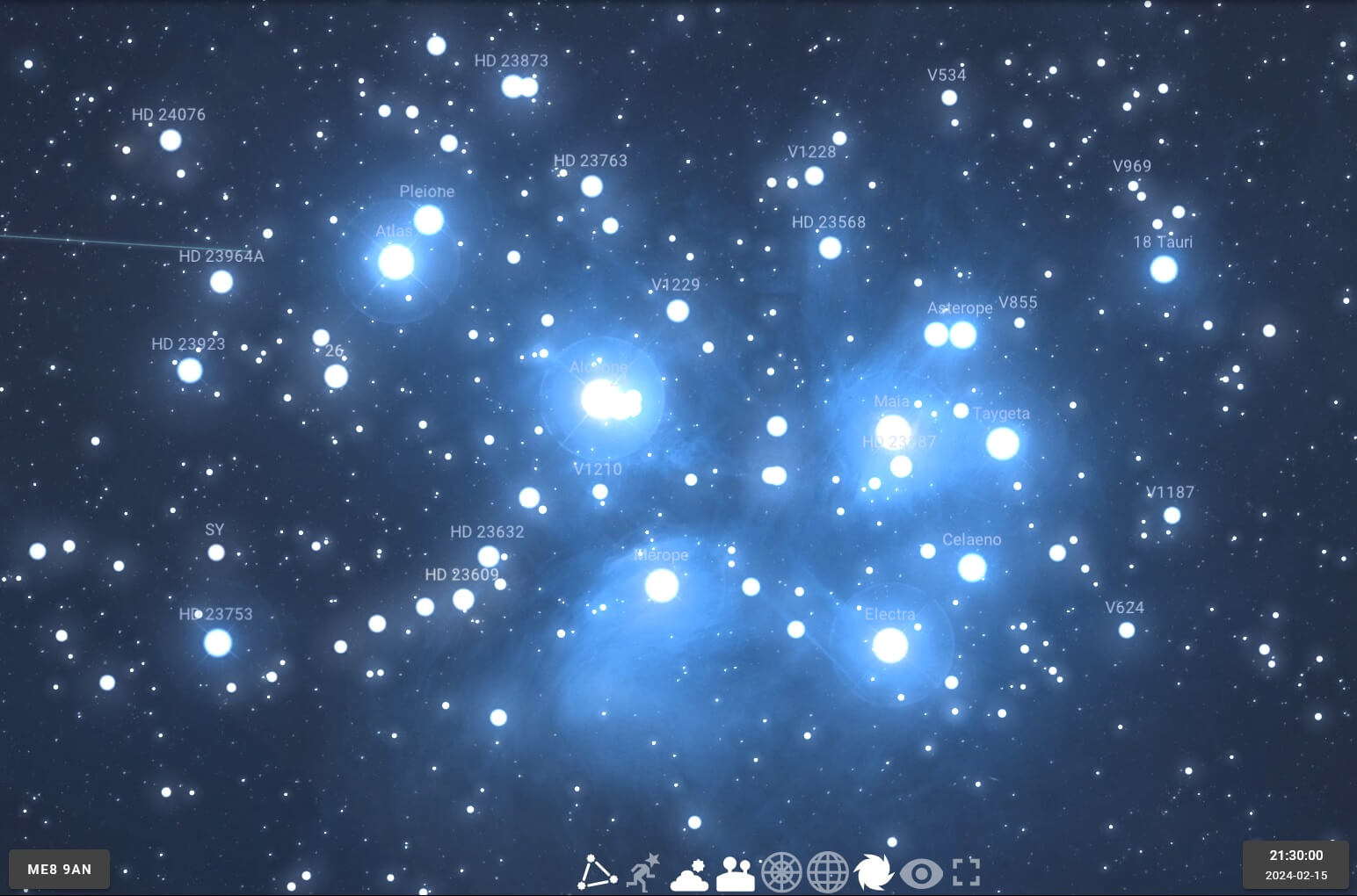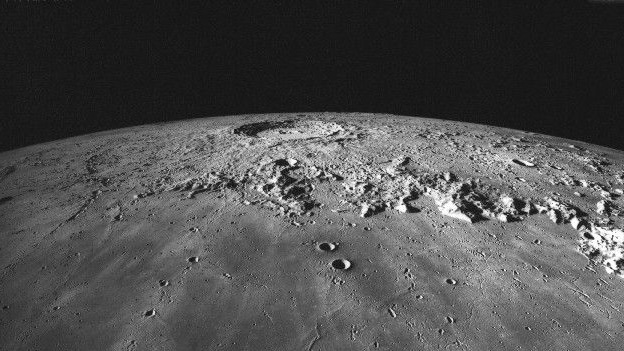TRAC Action Plan: February 2024
- Category: Action Plans
- Author: JM
- Published: 01 Feb 2024
- Last updated: 09 Feb 20244
Planets
Jupiter
Jupiter (mag. -2.1) will be visible throughout February 2024, but it will set at around 23:00 by the end of the month. In a few months, we'll lose Jupiter from our skies altogether, so let's enjoy it now while it can be viewed easily with binoculars and the telescope.
It will be exciting for new astronomy club members to get their first view of Jupiter – an unforgettable experience. For those who have seen Jupiter many times before, our aim will be to observe the planet's magnificent Great Red Spot – a hallmark feature of the gas giant.
Our challenge will be to take a photo of Jupiter using the phone adapter.
Saturn
Saturn has been one of our favourite objects to view over the past few months, but it's now lost too much altitude by the time darkness falls. Saturn is now too close to the Sun from our perspective for us to see it. The planet will pass close to the Sun on 29 Feb 2024.
While we'll miss Saturn's presence, we can look forward to welcoming the ringed planet back to our evening skies in August 2024.
Other Planets
The other planets are out of view this month. The exception is Uranus, which is positioned not that far from Jupiter. It's significantly fainter than Jupiter or Saturn, and therefore harder to locate. We'll turn our attention to Uranus later in the year once we have gained more experience with the brighter planets.
The Pleiades (Star Cluster)
The Seven Sisters
We'll take a look at one of the most striking open star clusters in the night sky: the Pleiades.
Located approximately 440 light-years from Earth, this dazzling cluster is among the nearest to our planet. Spanning about 12 light-years in diameter, the Pleiades is home to around 500 intensely hot, young stars, which are estimated to be just 100 million years old.

Image credit: Stellarium
The Pleiades is often called "The Seven Sisters" because its seven brightest stars are visible to the naked eye under clear, dark skies.
Start Star Counting
During our observation, we'll count how many stars we can spot using binoculars and a telescope equipped with a wide-angle eyepiece. Afterwards, we'll compare that to the number of stars visible to the unaided eye.
Learn More
Read more about this famous star cluster:
Lunar Observations
Here's how the lunar calendar looks for February 2024:
- Last Quarter Fri 02
- New Moon Fri 09
- First Quarter Fri 16
- Full Moon Sat 24
Exploring the Moon
As well as observing this month's Full Moon, we can have a go at locating some of the largest lunar craters. The famous Copernicus crater would be a good candidate for our first attempt.

Image credit: Lunar and Planetary Institute (NASA)
The above image shows the 58-mile-wide (93 km) impact crater Copernicus in the distance. The crater is named in honour of Nicolaus Copernicus, the 16th-century astronomer who developed the revolutionary idea that the Earth moves around the Sun.
We'll need to refer to the Moongazing book, and the Philip's Moon Map will also come in handy during our lunar explorations!
More Lunar Photography
Building on the success of our Moon photos from January, we can try to photograph the western side of the Moon. That part of the Moon is visible after the date of the Full Moon, when it will be in its waning gibbous phase.
Of course, to get the best shots, we'll need clear, stable sky conditions, just like we had in January. With a bit of luck and the right weather, we'll be able to capture the Moon's features in stunning detail once again!
Weather Outlook
Unfortunately, the weather forecast for the month ahead doesn't look too promising. In fact, it can be summed up in one word: clouds. For us astronomers, this is truly a worst-case scenario.
If the forecast proves accurate, our best course of action will be to make sure we stay focused and put in some extra effort on any clear nights that come our way.
Summary
The night sky has a lot to offer in February 2024. We'll aim to make our first up-close observations of a star cluster, introduce new team members to Jupiter and its four largest moons, explore more of the Moon's surface, and capture some photos along the way.
Keep your fingers and toes crossed for clear skies!
James M
TRAC Team Leader
01 Feb 2024 – Rainham, Kent

TRAC is an amateur astronomy group based in Rainham (Kent) in the United Kingdom.
On clear nights, you'll find us outside, observing stars, planets, moons, galaxies, satellites, meteors, and comets.
This action plan is specifically tailored for our location, schedules, optical equipment, level of experience, personal interests, and local sky conditions.
Unless stated otherwise, all magnitude values refer to apparent magnitude and have usually been rounded to one decimal place.
We welcome any questions, feedback, or suggestions you may have. Please let us know if anything is unclear or if you notice an error, inaccuracy, or typo. Contact us via email.
© 2024 Taverners Road Astronomy Club